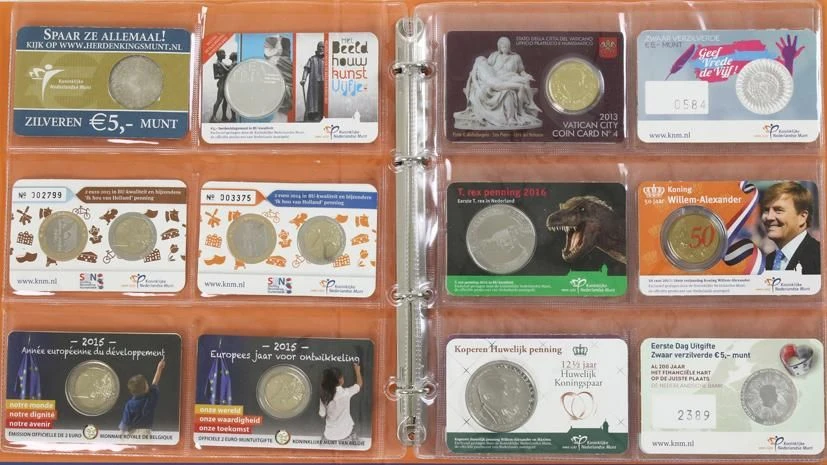The thing about coin collecting is that, when you are starting to get into it, you often come across specialized terminology that can be difficult to understand in the beginning of your numismatic journey. So, here in ColeMone, from time to time, we are going to take a look at those basic concepts. Let’s start this series of articles by talking about what a coincard is, their history, and some examples.
A coincard is a special form of coin packaging aimed at collectors -usually, the size of a credit card- in which the coin is encased in a blister typically made out of cardboard and/or plastic. This kind of packaging protects the coin, gives information about it, and even decorates it.
The history of the coincard
Coincards are a relatively modern invention, from around the end of the 1960’s.
In the tail end of the 1950’s and the beginning of the 60’s, many countries started to sell yearly coin sets in special collector’s presentations, containing the circulating coins they had issued in a particular year. There even were many previous instances of individual coins being sold in a premium packaging, but these were very fragile and, due to the lack of a standardized size, hard to store in a collection.

Nonetheless, and even with those problems, the packaging for individual coins revealed itself to be a success quite quickly.
Inspired by these deluxe presentations, and trying to solve the storage issue, sometime in the late 80’s or early 90’s, private coin stores started to put a coin in what today we call a ‘coincard‘. That way, they could add some value to the raw coin, and, therefore, sell it with a pricier tag.
It wouldn’t take long for mints all around the world to notice the benefits this new business model would bring to them, and, soon after, they started to include the new format in their numismatic programs.
In 1988, the first official coincard by a mint that I know of (feel free to correct me in the comments if I’m wrong): it was the 1988 Silver Kangaroo, by the Royal Australian Mint.
Some Coincard Examples
Under these lines, you can find the reverse side of the coincard for the 2001 Silver Kangaroo bullion coin, with a facial value of 1 Australian Dollar and a weight of 1 ounce. The 1998 issue of that same coin was the first coincard ever.
As you can see, the newfound room in the blister around the coin allowed the mint to include extra information on the design and characteristics of the piece that, otherwise, would be impossible to provide.

At this time, even though the coincard idea would soon take a firm root, its standard credit card size had not been really adopted yet. That particular format would be an invention by the Royal Dutch Mint in Utrecht.

And the new size finally solved the storage issue: some preexisting banknotes sheets could now store them , and, over time, album manufacturers would create special sheets better adapted to the new format.

In coincards for Euro coins, the most common coin finish is Brilliant Uncirculated (BU). But there are exceptions to this rule of thumb, the coincard you see above these lines for the 2014 Andorra Commemorative 2€ coin presents it in a proof finish.


Once again, even though the traditional coincard format is the credit card one, a presentation package doesn’t have to comply with that in order to be considered one. For instance, the one above, belonging to the 2019 Estonia University of Tartu Commemorative 2 euro coin, is in a folder format. All the Estonian Commemorative 2€ coincards follow this format, and, yet, we call them coincards nonetheless.
And this is it. I hope you learned what a coincard is, and, as always, if you have any questions, do not hesitate to leave them in a comment down below.